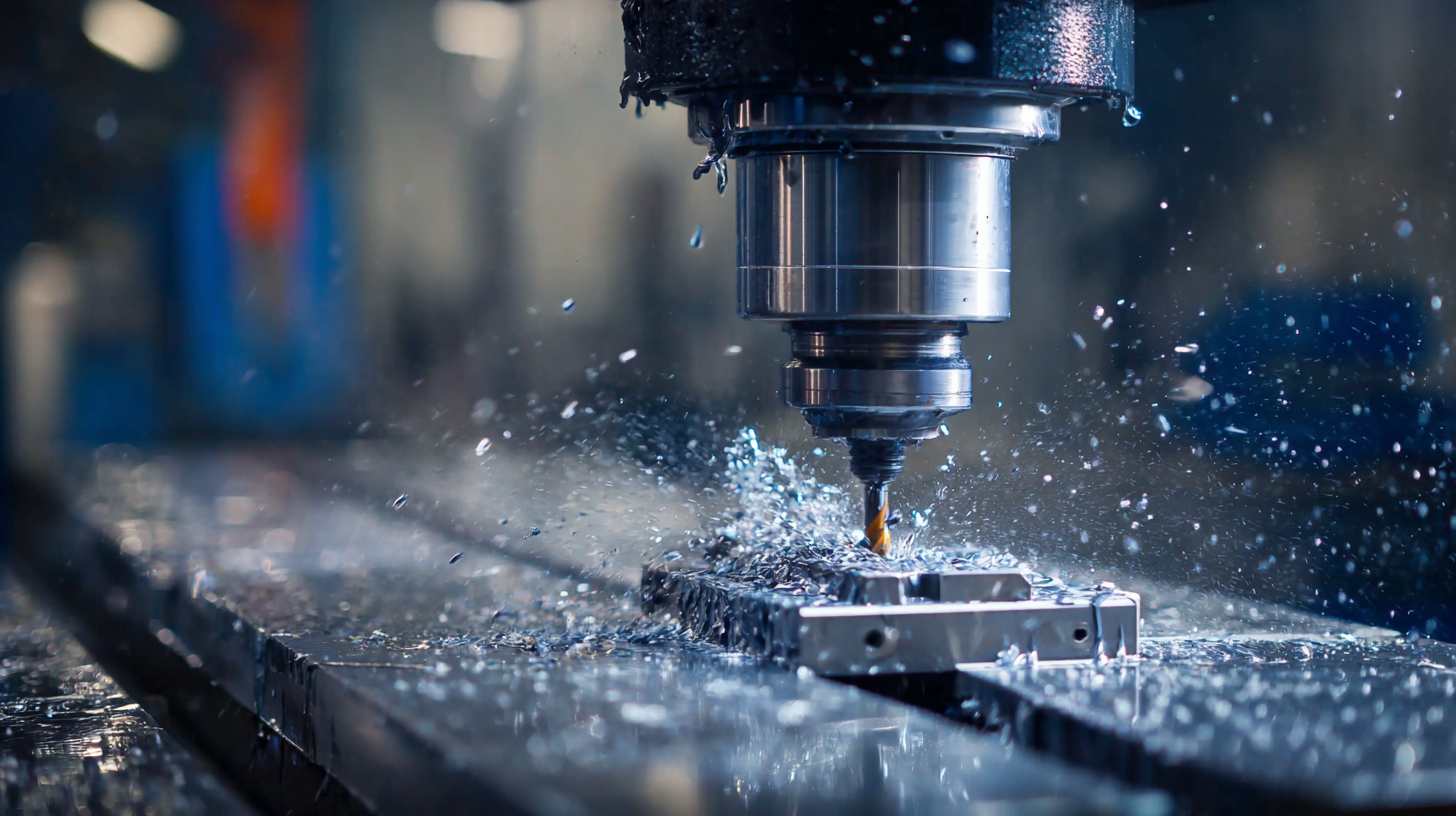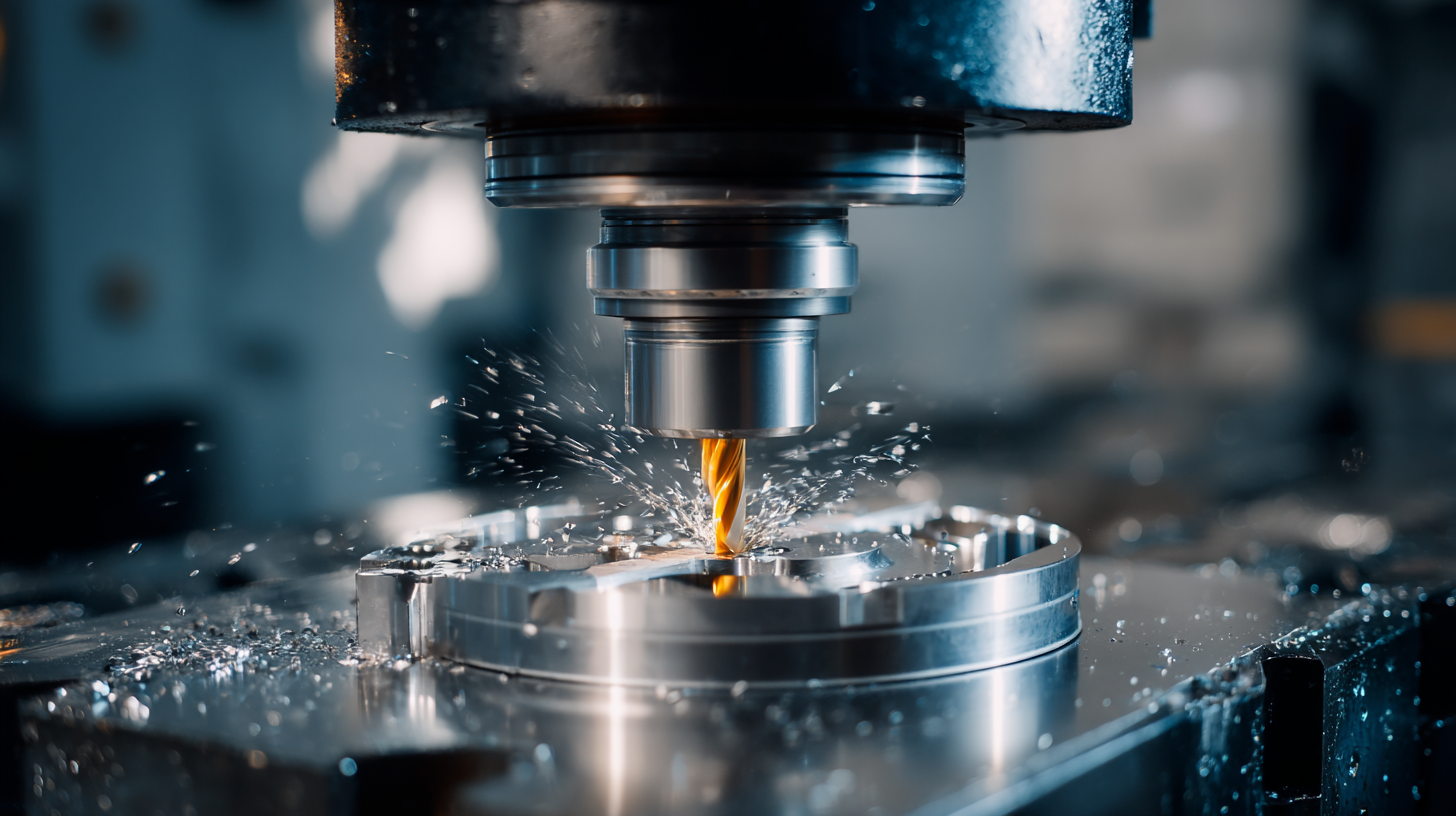Future Trends in Best CNC Machine Parts Market Analysis for 2025 with Real World Examples
As the manufacturing landscape continues to evolve, the CNC machine parts market is poised for significant transformation by 2025. According to a recent market research report by MarketsandMarkets, the global CNC machine parts market is projected to reach USD 12 billion, driven by advancements in technology and increasing demand for precision machining across various industries, including Aerospace, Automotive, and Healthcare.

Moreover, the rise of automation and smart manufacturing practices is expected to further enhance the relevance of CNC machine parts, as manufacturers seek to improve efficiency and reduce production costs. Real-world examples of companies successfully integrating cutting-edge CNC technologies demonstrate not only the importance of these components but also the potential for innovation in design and functionality.
This blog will explore the future trends shaping the CNC machine parts market, providing insights into their implications and opportunities for stakeholders in the industry.
Future Trends Shaping the CNC Machine Parts Market by 2025: Insights and Predictions
The CNC machine parts market is poised for significant transformation by 2025, driven by advancements in technology and an increasing demand for automation across various industries. By 2025, the global metal cutting tools market is projected to reach $86.24 billion, showcasing a robust compound annual growth rate (CAGR) of 7.3% through 2032. This growth trend reflects heightened interest in precision engineering and enhanced production efficiency, primarily fueled by the rising adoption of CNC machines.
Furthermore, the global CNC machine market is anticipated to surge from $101.22 billion in 2025 to an impressive $195.59 billion by 2032, indicating a remarkable CAGR of 9.9% during this period. This escalation is attributed to the ongoing integration of smart technologies, such as the Internet of Things (IoT) and artificial intelligence (AI), into CNC systems, enabling real-time data analysis and improved operational capabilities. As industries increasingly prioritize speed and accuracy, the demand for advanced CNC machine parts will undoubtedly shape the future landscape of manufacturing by 2025 and beyond.
Analyzing the Role of Automation in Enhancing CNC Machine Parts Efficiency
As the CNC machine parts market continues to expand, automation plays a pivotal role in enhancing efficiency and precision. The global CNC machine market is expected to surge from $101.22 billion in 2025 to an impressive $195.59 billion by 2032, reflecting a compound annual growth rate (CAGR) of 9.9%. This projected growth is largely driven by advancements in automation technologies that streamline production processes, reduce errors, and optimize resource utilization. Manufacturers are increasingly adopting smart manufacturing practices, which leverage automation to meet the rising demand for high-quality, precise components.

Real-world examples illustrate the tangible benefits of automation in the CNC machine parts sector. Companies integrating automated CNC systems report significant improvements in production speed and accuracy. These systems utilize sophisticated algorithms and sensors to monitor operations in real-time, allowing for adjustments that enhance output quality. Furthermore, automation minimizes manual intervention, thereby reducing labor costs and the likelihood of human error. As the CNC machine parts market evolves, the strategic implementation of automation will undoubtedly remain a key driver of efficiency, setting the stage for future innovations in manufacturing technology.
Key Manufacturing Materials in CNC Parts: Trends and Industry Growth Projections
The CNC machine parts market is experiencing significant growth, driven by advancements in manufacturing materials and technologies. By 2025, the global CNC machine market is projected to reach $101.22 billion, with expectations to soar to $195.59 billion by 2032, reflecting a robust CAGR of 9.9%. This surge indicates a thriving landscape for key manufacturing materials, such as high-strength polymers, alloy steels, and composite materials. These materials are increasingly becoming the backbone of CNC part production, enabling manufacturers to meet higher performance standards and demands for durability.
As the industry evolves, companies must adapt by embracing innovative materials and techniques. One tip for manufacturers is to stay informed about the latest material science developments to enhance product performance. Additionally, investing in training for staff on new manufacturing processes can lead to more efficient production and better quality control. Another important aspect is the need for sustainability; opting for eco-friendly materials not only meets regulatory standards but also attracts environmentally conscious consumers.
With projections indicating substantial growth across various CNC-related markets, including vacuum casting and standard parts manufacturing, the emphasis on material innovation and production efficiency will be crucial. By prioritizing these trends, businesses can position themselves at the forefront of the competitive landscape in the CNC machine parts market.
Leveraging Industry 4.0: Smart Technologies Transforming the CNC Machine Parts Sector
The CNC machine parts market is witnessing a transformative shift due to the integration of smart technologies in line with Industry 4.0 principles. This modernization leverages advanced digital manufacturing technologies, significantly enhancing productivity across diverse sectors. According to the latest projections, the CNC machine market is expected to grow at a CAGR of 5.5%, reflecting the increasing reliance on precision and efficiency in manufacturing processes. This growth is underscored by the machine tools market, which was valued at USD 97.1 billion in 2024 and is anticipated to reach USD 196 billion by 2034, growing at a remarkable CAGR of 7.5%.
The advancement of smart manufacturing reflects not only improvements in product quality but also advancements in operational efficiencies. Digital tools such as CNC digitalization software provide manufacturers with the ability to manage and analyze shopfloor performance effectively. These innovations have made it possible to achieve unprecedented levels of accuracy in machining, catering to an ever-evolving market that demands tailored solutions. As industries continue to embrace these technologies, the CNC machine parts sector will remain pivotal in driving productivity and sustainability, embodying a new era of manufacturing excellence.

Real-World Applications: Success Stories in CNC Machine Parts Innovation and Performance
The CNC machine parts market is evolving rapidly, with innovation driving significant improvements in performance and efficiency. One noteworthy example is the use of advanced composite materials in aerospace components. Companies like Boeing are integrating CNC-machined parts manufactured from lightweight composites, resulting in reduced weight and enhanced fuel efficiency for their aircraft. This shift not only addresses regulatory demands for lower emissions but also showcases the potential of modern CNC technology in achieving unprecedented precision and consistency.
Moreover, in the automotive sector, companies are leveraging CNC machining to produce complex engine components that optimize power and performance. A success story can be seen in Tesla's use of CNC machined parts in electric vehicles, allowing for intricate designs that improve aerodynamics and performance. The real-world application of these technologies demonstrates a clear trend toward customization and adaptability in CNC machining processes, positioning manufacturers to respond efficiently to evolving market needs. As we look ahead to 2025, these innovations are expected to shape the future landscape of the CNC machine parts market, highlighting the critical role of real-world applications in driving industry advancements.
Future Trends in Best CNC Machine Parts Market Analysis for 2025
| Dimension | Value | Real-World Applications | Success Stories |
|---|---|---|---|
| Market Size (2025) | $12 Billion | Automotive Parts Manufacturing | Increased Efficiency by 30% |
| Annual Growth Rate | 5.8% | Aerospace Components | Reduced Production Time by 40% |
| Most Used Materials | Aluminum, Steel, Titanium | Medical Device Manufacturing | Improved Precision by 25% |
| Emerging Technologies | AI and IoT Integration | Consumer Electronics | Enhanced Monitoring Capabilities |
| Customer Segments | Aerospace, Automotive, Medical | Defense Component Manufacturing | Achieved Higher Reliability Ratings |